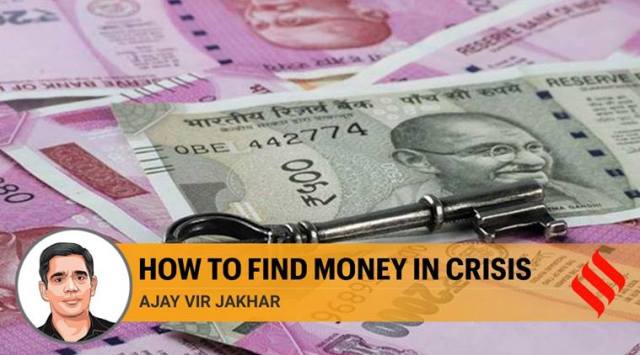
The COVID-19 crisis has precipitated into an unprecedented socio-economic calamity. Designing an adequate response has become increasingly complicated, and policy intricacies and decisions made in the next few weeks will have a profound impact on the future. Notwithstanding the enduring bonanza of low crude prices, India is desperately trying to sell family silver to overcome the revenue collection shortfall and, sadly, seeking foreign institution loans to keep its head above the water. Understandably, borrowing money and giving tax cuts are easy, while spending cuts are the hardest.
Over the years, populist governments in the Centre and in the states giving handouts, are now collectively reeling under a debt of over Rs. 170 lakh crore. Sixty per cent of this debt has been taken in the last six years, amounting to over 1 lakh crore new debt per month.
The question is not only how much money the RBI can print, but also, rather than borrowing indiscriminately, how to save and optimally utilise the scarce, available resources. An economic impetus will definitely be required for recovery, so it is time to rethink issues that were, until now, too sacrosanct to even be contemplated. About two crore state and central government employees covered by the pay commission guidelines, forming only 1.40 per cent of India’s population, are paid Rs. 12 lakh crore annually. Across India, there is no authentic data on the number of government employees, government-controlled institutions and their debt — to the extent that actual employee expenditure could be 50 per cent higher. This isn’t a simple case of governance failure, but a cleverly crafted attempt to keep the subject under the public radar.
Now is the time to cut the Gordian knot to rationalise pay structures. It is within the remit of the government to evoke the constitutional provisions of Article 360 to declare a financial emergency. I am sure that in the national interest Class A and B employees will evolve a consensus for a 25 per cent salary deduction for the next three years, if asked. Class C and D employees, who earn more than Rs.30,000 per month, will also willingly agree to a 10 per cent salary deduction. The deducted amount can be converted into interest-free bonds, redeemable after five years. Deductions should be applicable for all those whose salary is based on the Seventh Pay Commission recommendations and the recommendations should be reversed wherever accepted. All pensioners receiving pensions above Rs. 30,000 per month, too, should get a deduction of 25 per cent.
Government employees also receive allowances and perks, comprising about 25 per cent of the government expenditure on employees. The government can take a cue from the early 1990s: When India faced a somewhat similar economic crisis, the National Development Council’s Committee on Austerity recommended the freezing of dearness allowance, leave travel allowance, bonus, encashment of earned leave etc. Additionally, the retirement age of government employees should be reduced to 57 years and no more than 1 per cent be allowed retainment beyond that.
Elected representatives (MLA, MP etc.) get pension for each time they are elected to the office. It is time to reduce the outgo on their pensions and limit their pension to one term only. Those holding the government’s reins must set aside their pride and reverse the ill-conceived corporate tax-cuts and stall expenditure on statues, memorials, bullet trains etc. Such steps will release over Rs. 4 lakh crore annually to revive the economy. The establishment must not deflect from core issues by merely tinkering with allowances.
There’s another fundamental flaw in the process of India’s economic recovery. When the first economic package was announced — without consulting those for whom it was intended, the poorest sections of society — it came in for criticism. Now that the new announcements are due for corporate bailouts, the government is talking to the business leaders. This problematic attitude of only deliberating with the affluent sections of society is what got India into a grand mess in the first place.
This article was first published in print by the title ‘ How to find money in crisis’ on April 24. The writer is chairman, Bharat Krishak Samaj